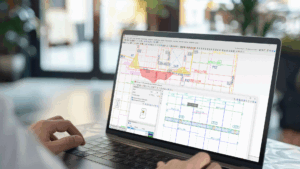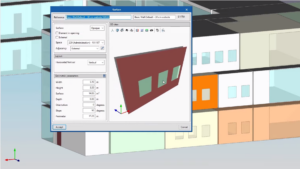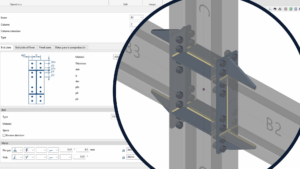
Imagine a detailed BIM model of a building. Now, add to that model the ability to see how it is built step by step, day by day. This is 4D BIM at its core. This developing concept would be like having a step-by-step instruction manual for any kind of construction project. But what is it exactly and how can it help the industry?
Origin and evolution of the 4D BIM concept
The BIM "D" theory emerged as a conceptual extension of BIM modelling, initially proposed in academic circles. The idea of adding the time dimension to the 3D model quickly gained popularity in the industry and became a trend. However, it is important to recognise that while the "D" theory concept offers potential benefits, its implementation varies from project to project and organisation to organisation, as it is not a one-size-fits-all solution.
How 4D BIM works
To understand this concept, the first thing to consider is the incorporation of time as an additional dimension in the BIM modelling itself. This way, the party interested in the project can see how it will develop throughout its construction process, from implementation to placing furniture. This temporary visualisation allows teams to anticipate problems and adjust plans before they become potential obstacles. Thus, some of the benefits of implementing this concept would be the following:
- Interactive representation: Clients, contractors or team members can see how the project is constructed, making it easier to understand the process.
- Early conflict detection: By simulating the plan, it is possible to identify potential conflicts before they occur on-site.
- Resource optimisation: Detailed planning results in more efficient assigning of resources, time and delays.
- Reduced costs: Detecting conflicts early can avoid costly mistakes, as well as the repetition of tasks that have already been carried out during construction.
- Improved communication: Making the project easier to understand for all parties involved, from investors to on-site workers.
The way CYPE integrates the BIM 4D concept
The models imported into CYPE Construction Works provide you with a suitable environment for integrating the "fourth D" into BIM, adding the time dimension to any project. This new tool, currently only available in Spain, was presented in 2024 and represents an innovative advance by allowing each element to be assigned to its corresponding construction phase.
You can combine all the models from other disciplines and apply the time factor, thus transforming a static model into a simulation of the construction process. This marks a before and after in construction project management forecasting, offering a significant advantage to the companies that adopt it.
CYPE tools provide not only accurate data and dynamic viewing, but also promote a collaborative workflow. Importing and exporting in standard formats such as IFC ensures interoperability between platforms, allowing professionals to work on a common model enriched with a wide variety of information. The flexibility of the models generated with CYPE and their integration in the BIMserver.center platform guarantees fluid communication throughout the project lifecycle, adapting to the specific needs of each job and scale.




